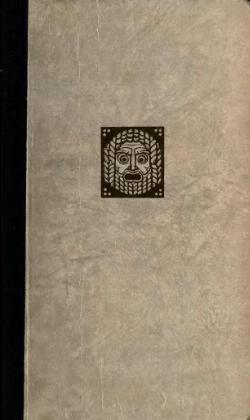یەکەم پیاوەکان لەسەر مانگ
یەکەم پیاوەکان لەسەر مانگ نووسینی نووسەری ئینگلیزی ھێربەرت جۆرج وێڵزە، ڕۆمانێکی زانستییە، کە لە سەرەتادا بە زنجیرەیی لە The Strand Magazine و The Cosmopolitan لە نێوان تشرینی دووەمی ١٩٠٠ تا حوزەیرانی ١٩٠١ بڵاوکراوەتەوە و لە ساڵی ١٩٠١ بە بەرگی ڕەق چاپکراوە.[١] وێڵز ئەم کتێبەی بە یەکێک لە «چیرۆکە خەیاڵییەکانی» ناوبردووە.[٢]
| یەکەم پیاوەکان لەسەر مانگ | |
|---|---|
 | |
| سەرناو | The First Men in the Moon |
| کاری وەرگیراو | First Men in the Moon، The First Men in the Moon، The First Men in the Moon |
| بابەتی سەرەکی | فڕینی بۆشایی |
| لە پێش | Love and Mr Lewisham |
| لە دوای | The Sea Lady |
| جۆر | ڕۆمان |
| چەشن | romantic fiction، خەیاڵی زانستی |
| چاپەکان | The First Men in the Moon |
| دانەر | ھێربەرت جۆرج وێڵز |
| وڵاتی بنەڕەت | شانشینی یەکگرتوو |
| زمان | زمانی ئینگلیزی |
| ڕێکەوتی بڵاوکردنەوە | ١ی کانوونی دووەمی ١٩٠١ |
| دێڕی سەرەتا | As I sit down to write here amidst the shadows of vine-leaves under the blue sky of southern Italy, it comes to me with a certain quality of astonishment that my participation in these amazing adventures of Mr. Cavor was, after all, the outcome of the purest accident. |
| کۆتا دێڕ | For my own part a vivid dream has come to my help, and I see, almost as plainly as though I had seen it in actual fact, a blue-lit shadowy dishevelled Cavor struggling in the grip of these insect Selenites, struggling ever more desperately and hopelessly as they press upon him, shouting, expostulating, perhaps even at last fighting, and being forced backwards step by step out of all speech or sign of his fellows, for evermore into the Unknown—into the dark, into that silence that has no end.... |
| دۆخی چاپکردن | پاوانی گشتی، پاوانی گشتی |
| Narrative motif | visit to land of moon |
ڕۆمانەکە باسی گەشتێک دەکات بۆ مانگ لەلایەن دوو کەسایەتی سەرەکییەوە: بازرگانێک بەناوی بێدفۆرد کە گێڕەرەوەی چیرۆکەکەیە؛ و زانایەکی سەیر بەناوی کاڤۆر. بێدفۆرد و کاڤۆر دەدۆزنەوە کە مانگ نیشتەجێی شارستانێکی پێشکەوتووی بوونەوەرە بۆشایییەکانە کە وەک مێروولە وان و ناویان لێدەنێن «سیلینایتس». سەرچاوەی ئیلھام وادیارە لە کتێبە بەناوبانگەکەی ژول ڤێرن لە ساڵی ١٨٦٥، From the Earth to the Moon، و ئۆپێراکەی جاک ئۆفنباخ لە ساڵی ١٨٧٥ وەرگیراوە. ڕۆمانەکەی ڤێرنیش ھەمان وشەی «سیلینایتس»ی بەکارھێناوە بۆ وەسفکردنی دانیشتووانی مانگ.[٣]
بە بەراورد لەگەڵ Brave New Worldی ئالدۆس ھەکسلی، کتێبەکە وەک لێکدانەوەیەکی قووڵی بیروباوەڕەکانی خودی وێڵز دەردەکەوێت سەبارەت بە جینسازی و بەتایبەتی سۆشیالیزم بە لایەنگری وەشانی وردتر.[٤]
سەرچاوەکان
دەستکاری- ^ The Early Fiction of H.G. Wells: Fantasies of Science. Springer. 17 April 2009. ISBN 978-0-230-23663-9. لە 31 January 2018 ھێنراوە.
{{cite book}}: نرخەکانی ڕێکەوت بپشکنە لە:|access-date=و|date=(یارمەتی) - ^ H. G. Wells, "Preface", in Seven Famous Novels (New York: Alfred A. Knopf, 1934, p. vii). Wells considered this category of work, which in his oeuvre also includes The Time Machine, The Island of Dr. Moreau, The Invisible Man, The War of the Worlds, The Food of the Gods, and In the Days of the Comet, to be "a class of writing which includes the Golden Ass of Apuleius, the True Histories of Lucian, Peter Schlemil and the story of Frankenstein. . . they do not aim to project a serious possibility; they aim indeed only at the same amount of conviction as one gets in a good gripping dream. They have to hold the reader to the end by art and illusion and not by proof and argument, and the moment he closes the cover and reflects he wakes up to their impossibility" (ibid.).
- ^ «Le roman de la lune».
- ^ Pringle, David (1997). Ultimate Encyclopedia of Science Fiction: The Definitive Illustrated Guide. Carlton Books Ltd, p. 239
| کۆمنزی ویکیمیدیا، میدیای پەیوەندیدار بە یەکەم پیاوەکان لەسەر مانگ تێدایە. |